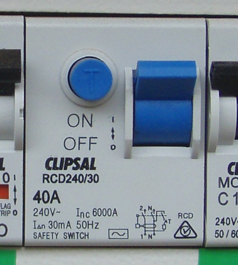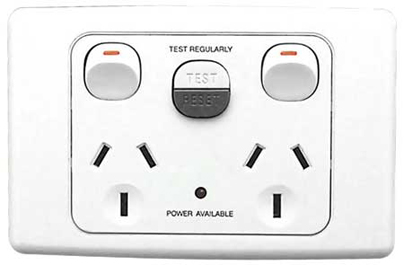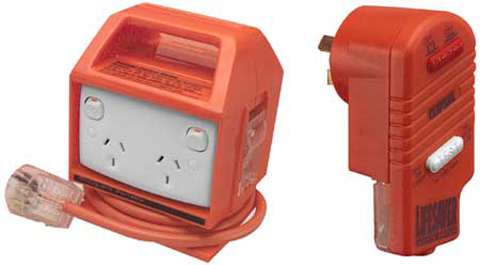By law, safety switches for power points and lighting circuits must be installed in new homes and buildings where electrical circuits are added or altered.
A safety switch quickly turns off the electricity supply if an electrical fault is detected. They are considered a back-up and don’t prevent all electric shocks.
Safety switches are also required for power outlets in caravan parks.
Types of safety switches
Different types of safety switches protect us in different ways. Understanding the differences can help you choose the right one for your needs.
Switchboard safety switches
Installed on individual circuits, switchboard safety switches can protect:
- selected electrical circuits
- appliances and extension cords connected to power points.
If an electrical fault occurs, the switch turns off the electricity supply to that circuit. Appliances and lighting connected to other circuits will keep working.

Switchboard safety switches must be installed by a licensed electrician. Make sure you are given a certificate of compliance within thirty days of the switch being installed.
Power point safety switches
This type of safety switch can protect appliances and power cords plugged into that switch. It can protect other electrical wiring and power points on the same circuit.
The safety switch should be installed at the first power point after the switchboard.

Power point safety switches must be installed by a licensed electrician. Make sure you are given a certificate of compliance within thirty days of the switch being installed.
Portable safety switches
Portable switches can protect people working with power tools and other electrical appliances. But they will only protect from faults with the equipment directly plugged into them.
Plug the portable switch directly into the power point and plug the appliance into the safety switch socket.

Test a safety switch
You should test your safety switches twice a year. Keep on schedule and test them when you change your clock for daylight savings.
Press the 'test' or 'T' button to trigger a test. The switch should immediately trip to the 'off' position. If it doesn’t, turn off the power at once and call a licensed electrician.
By law, safety switches in workplaces must be tested and records kept - South Australian Occupational Health Safety and Welfare Regulations.
Nuisance tripping and faults
If a safety switch has disconnected the power, it could be:
- a temporary fault
- lightning
- nuisance tripping.
Resetting the switch should restore the power. If you can't reset a safety switch, you could have a faulty appliance connected to the circuit, or faulty wiring.
Switch off and unplug the appliance you think is faulty and try to reset it again. If you are not sure which appliance is faulty, switch off and unplug one at a time and retest until you find the faulty appliance.
You can also call a licensed electrician to find and correct the fault.

